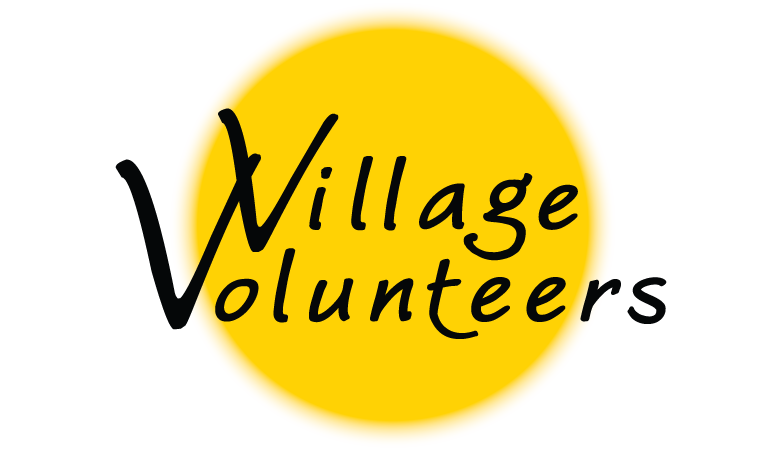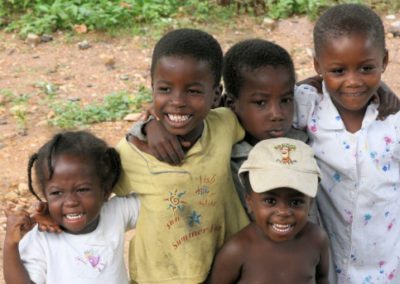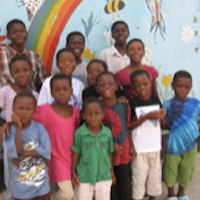Ghana
Volunteer Abroad in Ghana where each partner serves a different population and purpose. Please explore our program sites to learn more about volunteering in Ghana.
We love helping volunteers find their perfect placement. Fill out our Interest Form to get started!
Volunteer in Ghana with community-based organizations:
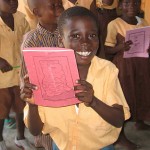 Atorkor Development Foundation (ADF) is a community-based organization that seeks to transform Atorkor village and the surrounding villages from being under-developed with extreme poverty into a self-sustaining community through economic development, adequate healthcare, education, a vocational and resource center. Volunteers will be able to work in all aspects of community life.
Atorkor Development Foundation (ADF) is a community-based organization that seeks to transform Atorkor village and the surrounding villages from being under-developed with extreme poverty into a self-sustaining community through economic development, adequate healthcare, education, a vocational and resource center. Volunteers will be able to work in all aspects of community life.
businessbuildingchildcarecultural studieseducationpublic health
Environmental Youth Development Movement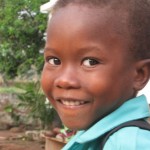
Ryvanz-Mia Children’s Home is a home in Kpando Village, Volta Region, Ghana, that provides disadvantaged children with nutrition, shelter, clothing, medical care, and education and early childhood development.
agriculturebusinesschildcarecounselingeducationpublic health
Geography
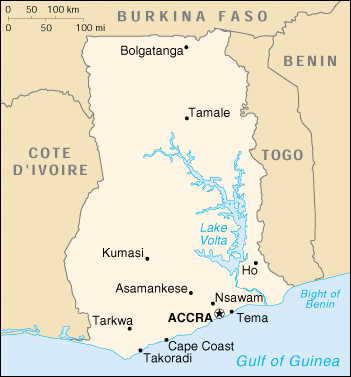
Ghana is located in West Africa on the Gulf of Guinea. It lies five degrees above the equator and borders Burkina Faso to the north, Cote d’Ivoire to the west, and Togo to the east. Ghana is slightly smaller in size than Oregon. It contains the largest man-made lake in the world, Lake Volta, which was created to provide electricity to the nation.
Tourism
Ghana is a country with beautiful beaches, picturesque waterfalls, and spectacular rainforests. The Kukum National Rainforest is home to various rare butterflies, bugs, and birds as well as game, such as forest elephants and bongos. In the Volta Region, Wli Falls plunges a spectacular 1500 feet. In Ada, the Volta River meets the ocean and beaches stretch for miles. In a country as beautiful as Ghana, it is amazing that the hospitality of the people is usually mentioned first. Ghanaians are known throughout the world for kindness.
Rich in history and culture, Ghana is an amazing place to visit. From the handmade batiks to the traditional drumming, Ghana overflows with art. Wood carvings, glass beads, drums, Kente cloth, straw baskets, and mud cloth are made and marketed all over Ghana. In the village of Bonwire, once can watch Kente cloth being made by the world’s best Kente weavers. Bonwire has been creating Kente cloth for Ashante royalty since the early 1700s.
Traditional festivals attract visitors from far and wide. In the city of Kumasi, the heart of Ashantiland, festivals honoring the ancestors are held every six weeks. These events surge with amazing colors and contagious music. Festivals are an amazing display of traditional culture, music, dance, and song.
Ghana is rich with art, culture, history, wildlife, scenery, and incredible people. Ghana truly has much to show the world.
History
Ghana, formerly known as the Gold Coast, was colonized by the British. It was called the Gold Coast because of the large amount of gold that was exported by colonial powers. Eventually, salves, rather than gold, became the largest commodity exported by colonial powers. Philip Curtin estimated that around 6.3 million slaves were taken from West Africa during the slave trade. To this day forts once used to hold Africans about to be shipped to North and South America line the coast of Ghana. Some are open to the public and offer tours.
On March 6, 1957, Ghana became the first African contry south of the Sahara to gain independence. The Gold Coast was renamed Ghana after the Ghana Empire, which thrived in West Africa during medieval times. After independence, Ghana became known as the Black Star of Africa. Many leaders of full emancipation movements in the African Diaspora drew on Ghana for inspiration. And Ghanaian leaders drew inspiration from the struggles for equality of black peoples all over the world. Both W.E.B. DuBois and George Padmore were buried in Ghana.
Quick Facts
Climate: tropical; warm and comparatively dry along southeast coast; hot and humid in southwest; hot and dry in north
Current Environmental Issues: recurrent drought in north severely affects agricultural activities; deforestation; overgrazing; soil erosion; poaching and habitat destruction threatens wildlife populations; water pollution; inadequate supplies of potable water
Population below poverty line: 28.5%
Life Expectancy: 61 years
Literacy (age 15 and over can read and write): male: 66.4%, female: 49.8%
Refugees: refugees (country of origin): 35,653 (Liberia); 8,517 (Togo)
People
Ghana is home to more than 21 million people who speak over fifty languages and dialects. Ghanaians come from numerous ethnic groups, including the Akan, Ewe, Guan, Mole-Dagbane, and Ga. The Akans, Ghana’s largest ethnic group, make up 44 percent of the population and speak many dialects of the language Twi.
Culture
Traditional culture is very much alive in rural areas of Ghana. In urban areas, traditional culture has been intertwined with imported Western culture. English is Ghana’s official language, but it is mostly spoken in schools, businesses, and government. Twi has become the language of everyday life in southern Ghana. Traditional clothes, dances, music, art, and rituals are a part of everyday throughout Ghana. Villages and workshops that make traditional art, such as Kente weaving, batik, glass beads, wood carving, baskets, and mud cloth, exist in all regions of Ghana.
Religion
The vast majority of Ghanaians are religious. While most identify themselves as Christians, it is not uncommon for them to practice traditional religions and to attend church services. Many Christian Ghanaians attend churches of more than one denomination. 63% of the population claim to be Christian, 16% are Muslim, and 21% follow traditional religious beliefs. Islam is most prevalent in Northern Ghana.
Education
In Ghana, children access day care for 1 year, pre-school for 3 or 4 years (called Nursery 1 and 2 and Kindergarten 1 and 2), primary school for 6 years (called Class 1 to Class 6 or Grade 1 to Grade 6), junior high school for 3 years (JHS1, JHS2, and JHS3), and then senior high school for 4 more years (SHS1, SHS2, SHS3 and SHS4).
Children may start nursery school between ages 3 and 6, and progress to higher education levels only occurs once all syllabuses are met. Therefore you will often find children of varying ages and abilities in the same classroom.
The academic year starts in September. There is a 1-month holiday break in August and again in December; and a 2-week holiday break during Easter (April) to separate the terms.
School Terms
Term 1: 1st week of September – 2nd week of December
Term 2: 1st week of January – 1st week of April
Term 3: 3rd week of April – 1st week of August
School Hours
Monday – Thursday: 7:00 am – 4:00 pm
Friday: 7:00 am – 2:00 pm
Saturday: 7:00 am – 2:00 pm (JHS and SHS only, as extra classes or remedial classes – this is optional and does not happen in most schools)
Class Size
There are approximately 20 children per class; however, there may be more or less. Sometimes two classes are joined due to lack of extra classrooms.
Challenges
Primary and junior high education is free, and supposedly compulsory, in Ghana for children between the ages of 6 and 14. However, in 1996, 76 percent of primary school-aged children were enrolled in school; and just 31 percent of secondary children were enrolled.
Please note that although school is free between the ages of 6 and 14, there are VERY FEW PUBLIC SCHOOLS and ALL of them are overcrowded. Because of the lack of public schools, parents are forced to send their children to one of the many private schools and have to PAY for education.
Unfortunately, many families cannot pay the secondary school fees in full by the time the child excels to the next grade level. When a family falls behind in paying the fees, the child is “sacked” and is refused to enter the school grounds until a substantial amount of fees are paid.
When children fall so far behind in their fees that they cannot attend school, they then typically enter the work force full-time. The family then becomes dependent on the additional income and education quickly loses its importance. Child labor therefore is very common and class assignments and personal studies become less important.
Through working together, we can help to raise these percentages and continue to build the future of a child, a family, a country, a continent, and eventually the world.
Health
The health of Ghana’s population has been steadily improving for the last few decades. In 1965, Ghana’s infant mortality rate was 120 per 1000 live births. In 1999, it was down to 57 per 1000 live births. In 1960, the life expectancy was 44 years. By 2000, it had risen to 57.3 years. In 1980, 64% of Ghana’s population was undernourished. In 2001, 12.5% of the population was undernourished. More and more Ghanaians have access to safe water, healthcare, adequate food, and adequate sanitation.
The statistics are moving in the right direction, but there is still work to be done. 26% of children under the age of five are stunted. One in every four children is underweight. Malaria remains the leading cause of premature death in Ghana. The vast majority of the health improvements have occurred in Ghana’s urban areas. Rural Ghanaians do not have the same access to safe water, healthcare, and adequate sanitation. According to the World Health Organization, as of 2004, there were only 9 physicians and 64 nurses per 100,000 people. With the number of AIDS / HIV cases rising, Ghana has an increased need for skilled medical professionals.
HIV/AIDS
In recent decades, the HIV / AIDS crisis on the continent has become devastating. AIDS has become the leading cause of death in Sub-Saharan Africa as a whole. In West Africa, infection rates are still relatively low. In 2003, Ghana reported a 3.1% adult infection rate, which is low in comparison to Kenya, but not when compared to countries such as the U.S. in which the adult infection rate is under .5%. The number of new HIV / AIDS cases in the U.S. peaked and has been decreasing ever since the early 1990s. The number of new cases in Ghana is still climbing.
Children and women have been the hardest hit by HIV / AIDS in Ghana. 70% of Ghanaians with HIV / AIDS are female. Large numbers of women dying from AIDS results in large numbers of orphaned children. In 2003, it was estimated that AIDS had orphaned 170,000 Ghanaian children. In 1994, 12,500 new AIDS cases and 300,000 new HIV cases were reported due to both the continued spread of the disease and improved reporting. Of the new AIDS cases, 4500 were children, mostly between the ages of five and ten. HIV / AIDS in Ghana has added stress to an already overburdened healthcare system.
Women’s Issues
Women compose approximately 50% of the world’s population but are 70% of the world’s poor. Like women the world over, Ghanaian women are struggling for equality. Ghanaian women have traditionally been homemakers, child bearers, farmers, and traders. Led by the National Association of Women and Development and the December 31st women’s movement, Ghanaian women have achieved much.
The government has outlawed female genital mutilation (FGM). In some parts of Ghana, as many as 38% of women have experienced FGM in some form. In 1998, it was estimated that 15% of all Ghanaian women had suffered FGM.
The practice of taking young girls from their families to become indentured servants for traditional priests has been outlawed as well. Many of these girls, called troksoi, which literally means “the wives of the gods,” have been freed with the help of the UN Development Fund for Women.
The former first lady of Ghana, Nana Agyeman-Rawlings, remains an influential women’s rights activist. In an article entitled “A Culture of Change in Africa,” Renee Loth wrote, “What Agyeman-Rawlings does want to change are practices she calls ‘truly inimical to the development of women.’ These include polygamy, rules against women inheriting property, and the ritualized genital mutilation that is still widespread despite being outlawed by Parliament.”
The number of educated Ghanaian women is also increasing. As of 2001, for every ten boys enrolled in primary school, there were nine girls. For every ten boys enrolled in secondary school, there were a little over eight girls. Above secondary school, there were less than four women for every ten men.
The Future of Ghana
Ghana is making great strides. It is a country well on its way to success with so much to show the world. Akwuaba, Ghana welcomes you!
